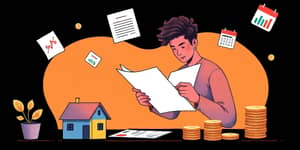
In recent years, personal loan debt in the United States has seen a steady uptick. As of Q1 2025, Americans collectively owe $253 billion in personal loan debt, marking a 3.3% increase year over year. While these funds can provide immediate relief for pressing needs, using loans for discretionary spending can put your financial health at risk.
Today, 24.6 million Americans carry at least one personal loan, with an average personal loan interest rate hovering around 20.78% APR. Even borrowers with good credit often pay rates near 16.48%. High rates combined with unnecessary expenses can snowball into overwhelming debt.
Before exploring deeper trends and strategies, it’s crucial to understand where and why people tap into personal loans. A balanced perspective can help you decide when borrowing is truly warranted.
Personal loans make up only 1.4% of total outstanding consumer debt, and about 5.1% of non-housing debt. Yet their high interest and unsecured nature mean they carry elevated delinquency risks. The 60+ days overdue rate stands at 3.49%, slightly lower than last year but still a warning sign for debt stress.
Overall consumer balances, including mortgages, auto loans, and credit cards, have risen by nearly 28% over five years—but much of this growth reflects inflation. Adjusted for price changes, real debt growth is closer to 3%, suggesting many households have moderated borrowing.
When considering a personal loan, categorizing expenses can protect you from financial pitfalls. Experts recommend reserving borrowing for true necessities and investments in stability, not for fleeting luxuries.
Essential expenses often include:
Non-essential spending, by contrast, covers:
Turning to a personal loan for discretionary purchases can lead to mounting financial stress and anxiety. High interest rates amplify costs: a $2,000 gadget at 20% APR could end up costing hundreds more in interest if carried over months.
Moreover, delinquency can damage credit scores and make future borrowing more expensive. With nearly 1 in 30 borrowers falling behind, the emotional toll of missed payments often extends beyond wallets to affect personal relationships and mental health.
Using loans for non-essentials also undermines long-term goals. Money that could have been invested or saved is instead diverted toward depreciating items, eroding wealth-building potential.
Prudent borrowing isn’t about avoiding loans entirely, but about using them wisely. Here are actionable steps to maintain control:
Personal loans are powerful tools when used for true necessities and strategic financial moves. By resisting the allure of discretionary borrowing, you protect your credit score and peace of mind.
Adopt a proactive mindset: carefully budget and assess the necessity of each loan, prioritize debt repayment, and seek professional guidance when needed. In doing so, you pave the way to sustainable financial health and freedom.
References













